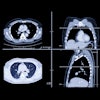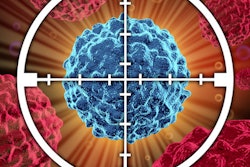
Overall cancer death rates declined in both sexes, all ages, and every major racial and ethnic group in the U.S. from 2015 to 2019, according to a National Cancer Institute (NCI) report published October 27 in Cancer.
The findings suggest that progress in reducing overall cancer mortality is accelerating, wrote a team led by Kathleen Cronin, PhD, of the NCI's division of cancer control and population sciences.
"Cancer death rates continued to decline overall ... and treatment advances have led to accelerated declines for several sites, such as lung and melanoma," the group noted.
The Annual Report to the Nation on the Status of Cancer (ARN) is a collaborative effort between the NCI, the Centers for Disease Control and Prevention (CDC), the American Cancer Society (ACS), and the North American Association of Central Cancer Registries (NAACCR).
This latest report shows that from 2015 to 2019, overall cancer death rates decreased by 2.1% per year in men and women combined. Among men, death rates decreased by 2.3% per year; among women, death rates decreased by 1.9% per year. The report also found that annual declines in cancer death rates accelerated from 2001 to 2019 in both men and women.
Death rates decreased for 11 of the 19 most common cancers among males and for 14 of the 20 most common cancers among females, with the steepest declines (more than 4% per year) reported for lung cancer and melanoma, Cronin's team wrote.
The investigators also reported the following:
- Among men, incidence rates increased for three cancers (including pancreas and kidney), were stable for seven cancers (including prostate), and decreased for eight (including lung and larynx) of the 18 most common cancers considered.
- Among women, incidence rates increased for seven cancers (including melanoma, liver, and breast), remained stable for four cancers (including uterine), and decreased for seven (including thyroid and ovarian) of the 18 most common cancers.
- Among children younger than 15 years, cancer incidence rates remained stable and decreased for mortality.
- Among adolescents and young adults between 15 and 39, incidence rates increased and mortality rates decreased.
Cronin and colleagues found that racial and ethnic disparities exist for many types of cancer. For example, from 2014 to 2018, incidence rates for bladder cancer decreased in white, Black, Asian/Pacific Islander (API), and Hispanic men, but increased among American Indian/Alaska Native (AI/AN) men. And although between 2015 to 2019, prostate cancer death rates were stable among white and Black men, they decreased among API, AI/AN, and Hispanic men.
Ultimately, the good news is that improvements in survival may be the result of therapy improvements, NCI director Dr. Monica Bertagnolli said in a statement released by the NCI.
"The findings in this year's Annual Report to the Nation show our ongoing progress against cancer, continuing a more than two-decade trend in declining mortality that reflects improvements in preventing, detecting, and treating cancer," she concluded.




















